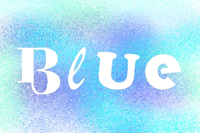While surfing I found mini or hand-held looms (see links below), which I find very interesting, because 1st I don’t have much place at home and 2nd I know that I don’t weave, I just try it once in a while ;-))
On the photo you see the front and back side of my little woven patch.
 I would never actually buy a loom, therefore I made me one from – guess… – yes: cardboard! ;-)
I would never actually buy a loom, therefore I made me one from – guess… – yes: cardboard! ;-)
On the photo you see me threading the loom in one direction.

Then I thread my cardboard loom in the other direction.
 That’s the way my cardboard loom looks at the back side.
That’s the way my cardboard loom looks at the back side.
 Now I’m weaving in one direction.
Now I’m weaving in one direction.
 And here I’m weaving in the other direction.
And here I’m weaving in the other direction.
 After having finished with weaving I crochet an edging to neaten the edge.
After having finished with weaving I crochet an edging to neaten the edge.
The first photo shows back and front side of the finished little piece.
Links:
At Weavettes:
How to weave on a mini loom (English) (via knitting-and.com)
The original site doesn’t exist any more and is now available through webarchive:
At Weavettes:
How to weave on a mini loom (English) (via knitting-and.com)
At eLoomaNation: Big Ideas from Little Looms:
Get ideas what to do with your patches
Get basic woman measurement charts for clothing patterns at the website of Jessica Tromp just as for the Clothes From Crocheted Medaillons


 One thing I found out is that I love the little flowers much more without any edging. Therefore I’m joining them while working.
One thing I found out is that I love the little flowers much more without any edging. Therefore I’m joining them while working. The other thing I played around with is another cardboard loom. In my
The other thing I played around with is another cardboard loom. In my 

 On the photo you see my first attempt (still without button): it’s such a nice idea :)
On the photo you see my first attempt (still without button): it’s such a nice idea :)










 img 1: Cut 3 equal pieces of your cardboard.
img 1: Cut 3 equal pieces of your cardboard. img 2: Wrap the wire round a dowel to form the eye. Then turn a couple of times to form the peg and then form a bigger eye which will be hidden in the pendant.
img 2: Wrap the wire round a dowel to form the eye. Then turn a couple of times to form the peg and then form a bigger eye which will be hidden in the pendant. img 3: Take the cardboard piece which will sit in the middle and trace your hanger.
img 3: Take the cardboard piece which will sit in the middle and trace your hanger. img 4: Cut out the place you will need for the hanger.
img 4: Cut out the place you will need for the hanger. img 5: Glue the hanger and the middle cardboard pieces onto one outer cardboard piece.
img 5: Glue the hanger and the middle cardboard pieces onto one outer cardboard piece. img 6: Glue the other outer cardboard piece onto. Your pendant-to-be-embellished is finished and you may begin with the embellishments.
img 6: Glue the other outer cardboard piece onto. Your pendant-to-be-embellished is finished and you may begin with the embellishments.




